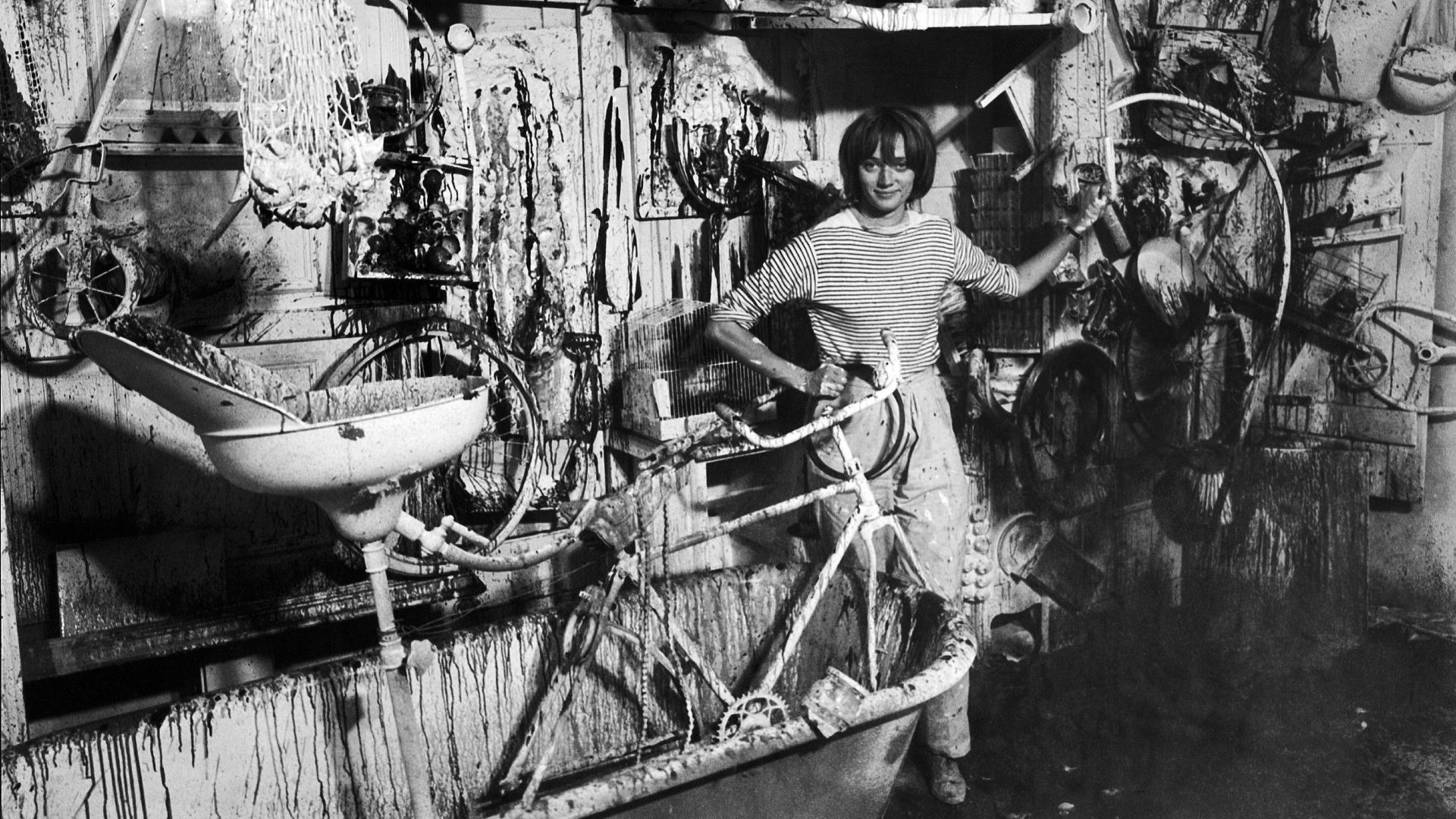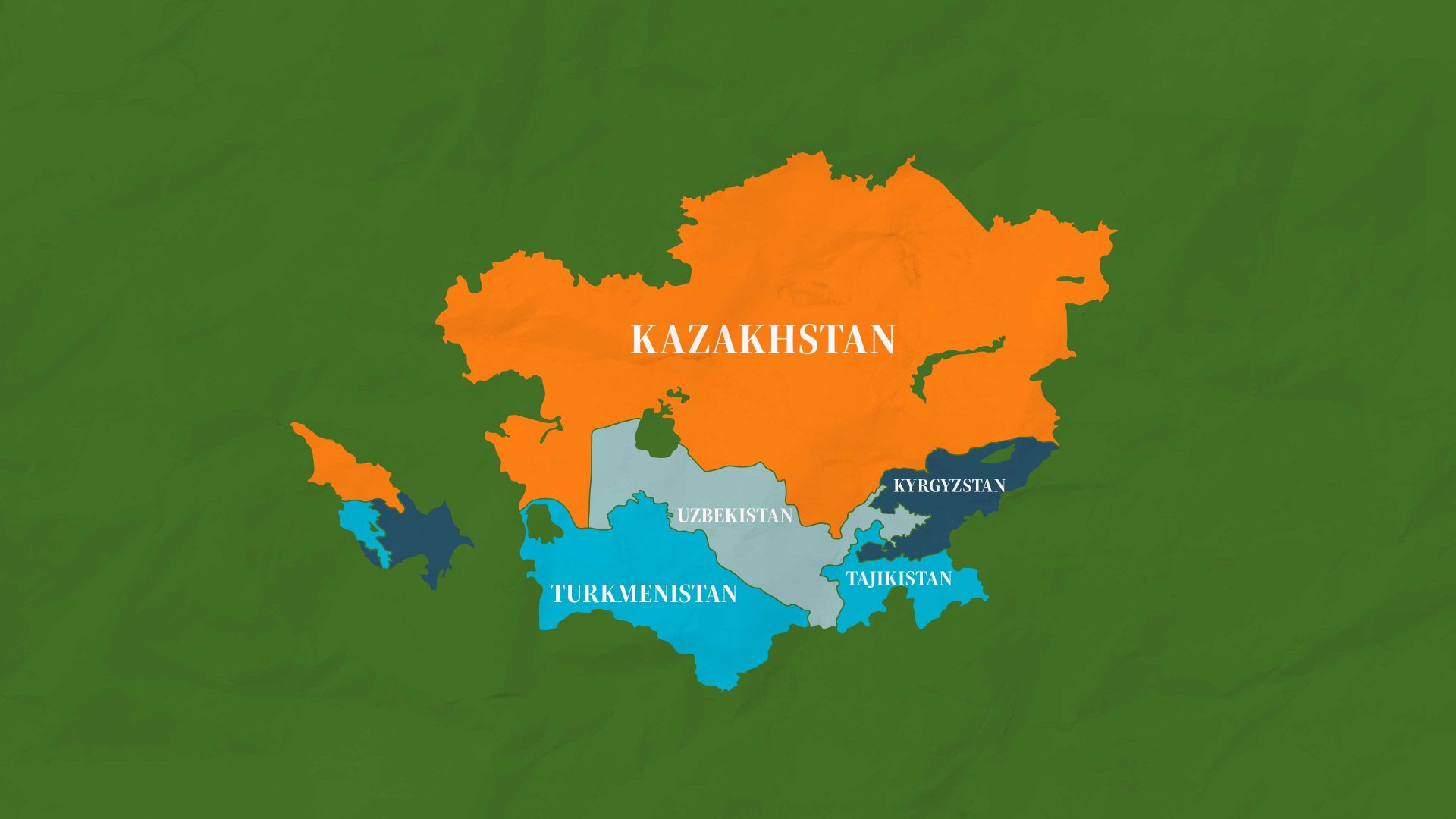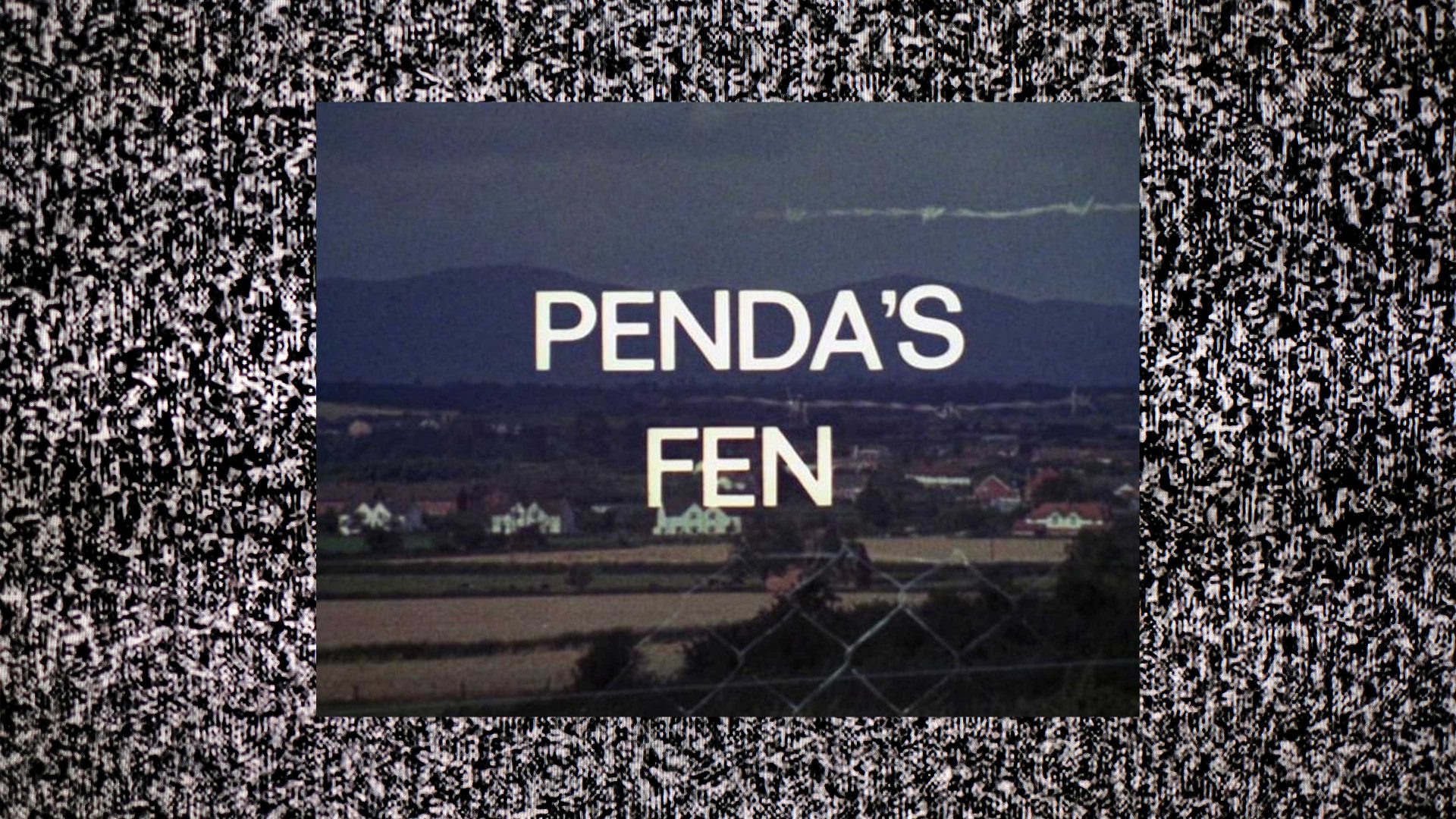“I was lucky to discover art because on a psychological level I had everything you need to become a terrorist.”
Perhaps unsurprisingly, Niki de Saint Phalle forged her artistic reputation with a rifle in her hands. For her first solo show in Paris in 1961, Saint Phalle prepared a series of white canvases covered in plaster, inside which were rows of plastic bags filled with paint. All she needed after that was a gun.
“We didn’t have enough money to buy one so we went to a fairground in the Boulevard Pasteur and convinced the man at the shooting range to rent us his,” she recalled. “It was a .22 rifle with real bullets which would pierce the plaster and hit the paint in little plastic bags embedded inside the relief.”
The bullets burst the bags, releasing the paint, which trickled down the contours in the plaster, an abstract work created by an artist dressed in a chic white jumpsuit several feet from the canvas – and armed.
“It was an amazing feeling shooting at a painting and watching it transform itself into a new being,” she said. “It was not only exciting and sexy but tragic, as though one were witnessing a birth and a death at the same moment.”
Saint Phalle’s Tir series grew increasingly spectacular, progressing to embedded cans of spray paint that ruptured with predictably explosive results.
“I used tear gas for the grand finale,” she said. “Performance art did not yet exist, but this was a performance.”
In 1963 she took her plaster and artillery first to New York, then Los Angeles where she pre-empted the coming of pop art by letting off rounds at a plaster representation of King Kong and sculptures of Fidel Castro, Charles de Gaulle, Donald Duck, Father Christmas and, just months before his assassination, John F Kennedy.
Saint Phalle’s career would be built around this increasing sense of spectacle. There was Hon, meaning “she” in Swedish, an enormous abstract sculpture of a reclining woman 80 feet long, 20 feet high and 30 feet wide installed in Stockholm’s Moderna Museet in 1966, an interactive piece so vast that the public entered through a door in the vagina to find a two-storey space inside housing music rooms, a milk bar, a cinema and an aquarium.
Even Hon would be dwarfed by the Tarot Garden, a series of 22 giant sculptures in a Tuscan field based on the tarot deck, which was almost a quarter of a century in the making. The abstract pieces, opened to the public in 1998, were made of reinforced concrete painted in bright colours and decorated with mirrors and ceramics, created on a scale so large that Saint Phalle occasionally lived inside one while working on the project.
Tarot Garden betrays the most profound influence of Antoni Gaudí, her greatest inspiration. She had first encountered Gaudí during the 1950s while leading a peripatetic European existence with her first husband, the American novelist Harry Mathews, whom she had first met when they were children growing up in the US.
Saint Phalle was born in Paris to a French father who loved America and a Francophile American mother, a transatlantic mindset that defined her life and work. The family moved to the US when Saint Phalle was four years old, but while her childhood was outwardly privileged – her father was a banker – her formative years were blighted by violence from both parents and, from the age of 11, horrific sexual abuse by her father.
Although her unsettling 1973 film Daddy hinted strongly at dark events in her past, Saint Phalle only revealed the full extent of the abuse in her 1993 illustrated memoir Mon Secret. She was not the only child in the household to suffer, either. So deeply embedded was the trauma that blighted their upbringing, two of the artist’s younger siblings went on to take their own lives.
Unsurprisingly, given the horrors at home, Saint Phalle was expelled from several schools before giving up on formal education altogether. She embarked on a successful modelling career, appearing in Vogue and Elle and on the covers of Harper’s Bazaar and Life. Such a familiar and striking figure did she become in Manhattan that many years later Gloria Steinem recalled seeing the young Saint Phalle walking down 57th Street dressed as a cowboy.
“That is the first free woman I have ever seen in real life,” Steinem remembered thinking. “I want to be just like her.”
Saint Phalle had married Mathews at 18 and the couple moved to Paris in 1952, but a major mental health episode in 1953 saw Saint Phalle committed to a psychiatric institution in Nice where she received electro-shock therapy and, crucially, was encouraged to explore her creativity as part of her recovery.
“I started painting in the madhouse, which is where I learned how to translate emotions, fear, violence, hope and joy into painting,” she said. “It was through creation that I discovered the sombre depths of depression, and how to overcome it.”
Darkness infused her art, always tangible beneath her persistent use of bright colours and simply expressed designs. Saint Phalle is arguably best known for her Nanas, bulbous abstract female figures with exaggerated bodies painted with flowers and symbols that resembled targets on their breasts and stomachs, created in both paint and sculpture as the most overt expression of her commitment to feminism and the need to confront the oppression of women.
In her later years she became a rare early vocal advocate for people suffering with Aids, in 1986 producing in collaboration with a Swiss doctor the illustrated book You Can’t Catch It Holding Hands. Its simple, compassionate message and promotion of safe sex seem so obvious now as to be almost quaint, but it was revolutionary at the time. It was a brave move at a time when fear and bigotry obscured medical truth in the public consciousness. The book was widely praised by art critics and campaigners for HIV awareness.
Such avant-garde iconoclasm made Saint Phalle, who was entirely self-taught, a crucial figure in contemporary art. She was a pioneer in art-as-spectacle whose work was also a vital conduit for the anger and depression that lingered as a result of her blighted childhood.
Whether she had an actual gun in her hand or not, art became her weapon, a noisy defence against the world and an instrument of her reckoning with the past.
“It was a terribly exciting thing because one could get out all of one’s aggressive feelings,” she said. “I was able to get out all of my aggressions and not hurt anybody.”




